Article
Great Drives and Destinations: Redondo Beach
Author(s):
Cruising coastal California by car can be the vacation itself. Our first stop: Redondo Beach, which manages to combine some of the upscale urban life of Los Angeles with the laid-back coastal culture that defines Southern California.
Photography by the authors.
Public transportation in Southern California is so inept that visitors really need to rent a car to get around. Distances are significant and vacation time is always precious. Also, cruising coastal California by car can be the vacation itself. Ralph Waldo Emerson was right: It’s the journey, not the destination.
Any visitor flying into the hell and the fury that is the Los Angeles International Airport will surely find the relative serenity of the Pacific Coastal Highway between Los Angeles and say, San Diego a fun, nostalgic trip through the 1950s.
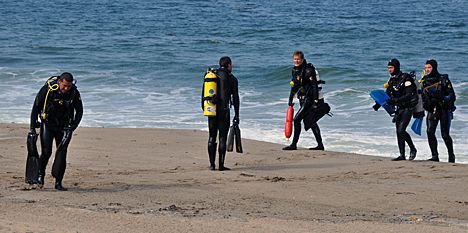
Redondo Beach manages to combine some of the upscale urban life with the laid-back coastal culture that defines Southern California. Despite the name, Redondo Beach is more like a grouping of yacht marinas, although the beach that enfolds the harbors is readily accessible.
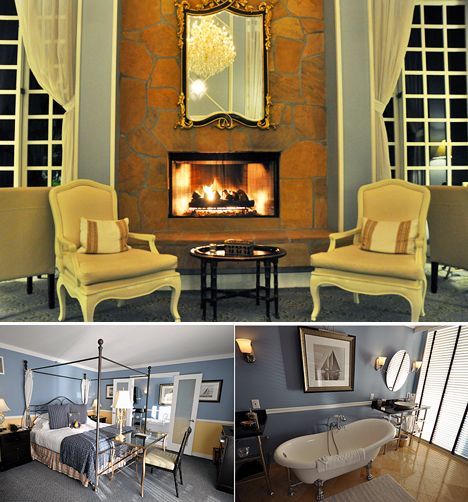
The town differs from Huntington Beach, Calif., the so-called “Surf City” to the South, because it lies in Los Angeles County and attracts the LA crowd. As a result, there tends to be more diversity and contrasts.
Stroll around the marinas and you’ll find reminders of the post-World War II era: A brightly-painted “Fun Factory,” a “pirate yacht” with a crew of life-size female mannequins swinging from the mast, and a tongue-in-cheek warning stuck on a particularly high cairn of rocks on top of the sea wall proclaiming, “No Parking At Any Time.”
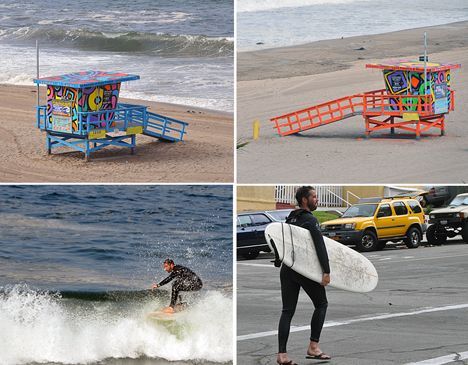
All this kitsch suggests this is a town that doesn’t take itself too seriously, and then suddenly you come upon the splendor of Redondo’s upscale Portofino Hotel and Yacht Club, with its vaulting white ceiling, Wedgewood blue walls, striking fireplace, chandeliers and nautical themes. We see the guests sitting in the spacious lounge with their laptops and ask a hotel spokesperson, “What makes this hotel special?”
“You are fifteen minutes from LA -- then you are in this, this paradise,” he replies. “We have a location on the water with gorgeous sunsets while you watch the yachts slip by. The seal lions love it here, too; that’s why we offer ear plugs for light sleepers! Then you have the proximity to shops and restaurants, although our restaurant Baleen is so acclaimed it’s nothing for people to drive an hour or more just to dine here.”
We became believers. We had dinner one night in Baleen that was one of the Top 10 meals we’ve had in all our years of travel. Yet the bill, with wine, came to just $140.
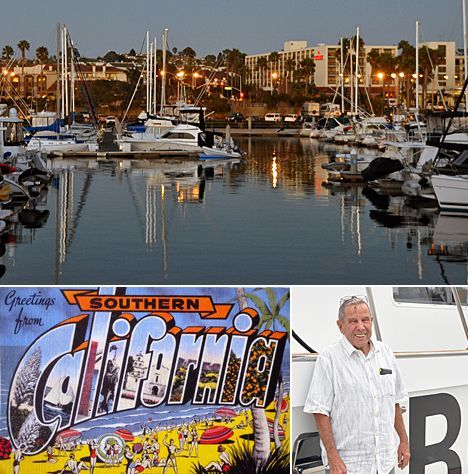
You don’t find significant mountain ranges in coastal southern California, of course. The surf and its challenge is the enticement, and the locals embrace it with enthusiasm. Whether it’s for surfing or scuba, locals will willingly snatch a few minutes from work just to get in a quick dive or a rapid ride on a wave.
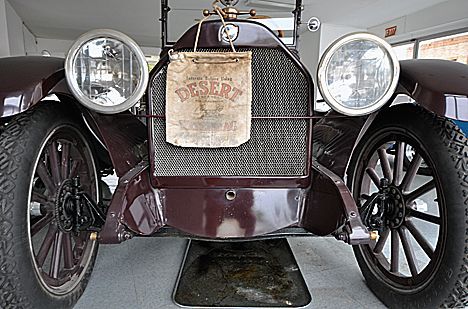
You couldn’t find a better enthusiast than Bob Meistrell. With his late twin brother, Bill, he co-founded Body Glove, the company that made them both famous and wealthy. Former farm boys from Missouri, the Meistrells were pioneers in surfing and, way back in 1944, thought of adding fiberglass to the nose of plywood surf boards to protect them. They later designed the first wetsuits “fit like a glove.”
We were walking around one of the marinas, smiling at some of the names boat owners give their yachts — the Mirabella, Lady Donna, Ms. Chief and LA Woman -- when we ran into Meistrell. After hearing our conversation, he said, “LA Woman is owned by a doctor.”
Then Meistrell invited us aboard his boat, The Disappearance. Asked if he is certified as a diver, he grins and says, “I have the UICC diving instruction certificate number 1.” Recently, on Meistrell’s 82nd birthday, went diving down to 122 feet and he says he intends to go 400 feet on his next birthday. Meistrell has made many professional underwater movies and has taught actors such as Lloyd Bridges, Charlton Heston and Gary Cooper to dive.
Meistrell is without doubt a local character and, despite his wealth, very down to earth. His brother Bill’s favorite restaurant was Burger King, so when Bill died Bob chose the fast-food chain to cater the funeral service.
Meistrell says the Portofino Hotel and Yacht Club was first owned by Mary Davis, an early Cal Club race driver. She, along with race driver Brock Yates, originally set up the first “Cannonball Run” in 1971 between New York to Los Angeles, a race that began with the time recorded at the Red Ball Garage on 32nd Street and ended at the clock on the counter of what was then called the Portofino Inn. The annual races continued until 1979. In its earlier days, the hotel was a hangout for racers: Peter Revson, millionaire racing driver and Revlon heir, had a condo here, though he died in a crash at age 35.
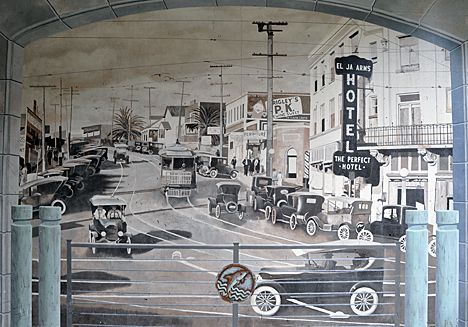
This is indeed car country and it’s been that way from the town’s early days. A walk around the marinas brings visitors to murals that showcase it heritage. As we strolled we asked some locals whether they have a favorite local Mexican restaurant, we drive about three miles south to Riviera Village to a restaurant called “Riviera.” An hour later, it became our favorite Mexican restaurant in Redondo Beach, too.
- Huntington Beach
- Irvine
The Andersons, who live in San Diego, are the resident travel & cruise columnists for Physician's Money Digest. Nancy is a former nursing educator, Eric a retired MD. The one-time president of the New Hampshire Academy of Family Practice, Eric is the only physician in the American Society of Travel Writers. He has also written five books, the last called The Man Who Cried Orange: Stories from a Doctor's Life.




